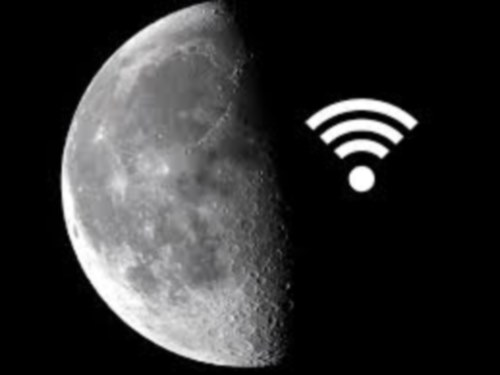As great as the technology is, Wi-Fi presents us with many challenges. Sometimes you just can’t get Internet access at the most inconvenient times (especially when you’re trying to log-in to Facebook and check in at an event).

Internet access is difficult to attain on Earth, now imagine trying to get a good connection on the moon. Well, researchers from MIT’s Lincoln Laboratory and NASA have finally figured it out after they started breaking records in this field last year. The two groups will finally present their findings on June 9 at the Conference on Lasers and Electro-Optics (CLEO: 2014) in California. They will give the first overview of the in-orbit performance of their record-shattering laser-based communication uplink between the moon and Earth which beat previous record transmission speeds last fall.
How it works
“Communicating at high data rates from Earth to the moon with laser beams is challenging because of the 400,000-kilometer distance spreading out the light beam. It’s doubly difficult going through the atmosphere, because turbulence can bend light—causing rapid fading or dropouts of the signal at the receiver,” said Mark Stevens of the MIT Lincoln Laboratory.
To deal with the distance challenge, the demonstration uses several techniques to achieve error-free performance over a wide range of atmospheric conditions in both darkness and bright sunlight.
Four telescopes send the uplink signal to the moon. Each telescope is about 6 inches in diameter, fed by a laser transmitter that sends information coded as pulses of invisible infrared light and give off 40 watts of power.

Computer-aided design drawing of the optical module on the satellite showing
the telescope and gimbal (pivoted support). (Image Credit: NASA)
The team uses four telescopes because each one transmits light through a different column of air that experiences different bending effects from the atmosphere. This increases the chance that at least one of the laser beams will interact with the receiver, which is mounted on a satellite orbiting the moon. This receiver uses a slightly narrower telescope to collect the light, which is then focused into an optical fiber similar to fibers used in terrestrial fiber-optic networks.

The ground terminal, with the sun reflecting off of the solar windows of the uplink telescopes.
(Image Credit: Robert LaFon, NASA/GSFC)
From there, the signal in the fiber is amplified about 30,000 times. A photodetector converts the pulses of light into electrical pulses into data bit patterns that carry the transmitted message. Of the 40-watt signals sent by the transmitter, less than a billionth of a watt is received at the satellite — but the team is hopeful because that’s still about 10 times the signal necessary to achieve error-free communication.
Can you see it now? Astronauts can be on the moon taking selfies and checking-in on Facebook.
Last year, the two groups demonstrated for the first time that a data communication technology exists that can provide space dwellers with the connectivity all enjoy on Earth, enabling large data transfers and even high-definition video streaming.
They made history last year when their Lunar Laser Communications Demonstration transmitted data over the almost 240,000 miles between moon and Earth at a download rate of 622 megabits per second, faster than any radio frequency system.
Story via The Optical Society.
Advertisement





